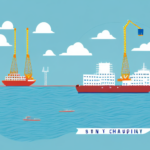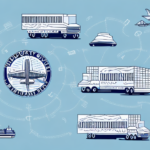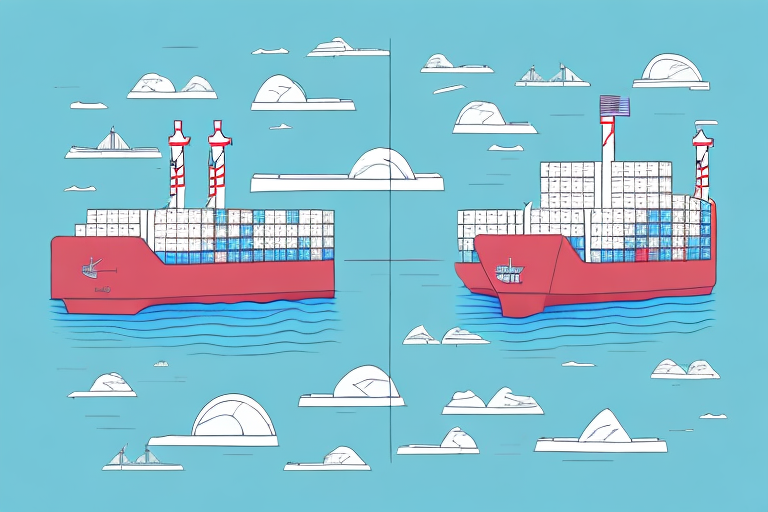Understanding the Carmack Amendment: An Overview
The Carmack Amendment is a pivotal federal law that governs the liability of carriers for loss or damage to goods during interstate transportation. Enacted as part of the Interstate Commerce Act of 1906, this amendment establishes the responsibilities of carriers and outlines the procedures for filing claims against them. Understanding the Carmack Amendment is essential for shippers, carriers, and freight forwarders navigating the complexities of the freight industry.
What is the Carmack Amendment?
The Carmack Amendment imposes strict liability on carriers transporting goods across state lines. This means carriers are responsible for the loss, damage, or delay of goods, regardless of fault, unless specific exceptions apply. It covers all modes of transportation, including rail, motor, water, and air, and supersedes conflicting state laws.
Historical Context
Prior to the Carmack Amendment, interstate transportation was governed by a patchwork of state regulations, leading to inconsistencies and limited protections for shippers. The amendment was introduced to create a uniform legal framework, ensuring predictable and fair treatment for all parties involved. Since its inception in 1906, the amendment has undergone several revisions to adapt to the evolving transportation landscape.
Key Provisions of the Carmack Amendment
The Carmack Amendment outlines several crucial provisions that define carrier liability and the rights of shippers:
Strict Liability
Carriers are held strictly liable for any loss, damage, or delay of goods during transportation. This liability is unconditional, meaning carriers cannot avoid responsibility by proving lack of negligence unless an exception applies.
Burden of Proof
Under the amendment, carriers bear the burden of proving that the loss or damage was not due to their actions. This shifts the onus onto carriers to demonstrate they fulfilled their contractual obligations and that no exceptions apply.
Notice of Claim
Shippers must file a written notice of claim within nine months from the date of delivery or the scheduled delivery date. Timely filing is critical to preserve the right to recover damages.
Filing a Suit
Should initial claim negotiations fail, shippers have up to two years from the carrier's disallowance or partial payment of the claim to file a lawsuit.
Exceptions and Limitations
While the Carmack Amendment imposes strict liability, there are specific exceptions and limitations that can mitigate carrier responsibility:
Acts of God
Natural disasters such as floods, earthquakes, or hurricanes that cause loss or damage are considered acts of God and exempt carriers from liability.
Public Enemies and Inherent Vice
Acts committed by public enemies or inherent defects in the goods that cause damage are also exceptions under the amendment.
Limitation of Liability
Carriers' liability is generally capped at $25 per shipment, though shippers can declare a higher value and pay additional fees to increase this limit. Additionally, if loss or damage results from the shipper's negligence—such as improper packaging—the carrier's liability may be reduced or nullified.
Role of Freight Forwarders
Freight forwarders act as intermediaries between shippers and carriers. Depending on their contractual agreements and the extent of their responsibilities, freight forwarders may or may not be subject to the Carmack Amendment:
As Carriers
If freight forwarders issue their own bills of lading and assume carriage responsibilities, they are liable under the Carmack Amendment for any loss or damage to goods.
As Agents
When acting solely as agents facilitating transportation without assuming liability, freight forwarders are typically not governed by the Carmack Amendment. Instead, they may be subject to other regulations, such as the Uniform Commercial Code (UCC).
Filing a Claim Under the Carmack Amendment
To seek compensation for loss, damage, or delay, shippers must adhere to the following steps when filing a claim:
Documentation
Thoroughly document the extent of loss or damage, including photographs, inventory lists, and any relevant correspondence with the carrier.
Written Notice
Submit a written claim to the carrier within the nine-month timeframe, ensuring it meets all specified requirements for form and content.
Legal Action
If the carrier disputes the claim or offers insufficient compensation, pursue legal action within two years from the carrier's disallowance or partial payment.
Resolving Disputes: Litigation, Arbitration, or Mediation
Disputes under the Carmack Amendment can be resolved through various methods:
Litigation
The traditional approach involves filing a lawsuit in court, where a judge or jury will determine the outcome based on presented evidence.
Arbitration
An alternative to litigation, arbitration involves a neutral arbitrator or panel making a binding decision after reviewing both parties' arguments.
Mediation
Medieval involves a mediator assisting both parties in reaching a mutually agreeable settlement, though the outcome is non-binding.
Common Misconceptions About the Carmack Amendment
Several misunderstandings surround the Carmack Amendment:
- Applicability: It does not apply to international shipments that do not involve an interstate segment.
- Damages: The amendment does not allow for punitive damages or attorney's fees.
- Insurance: Carriers are not required to obtain insurance under the Carmack Amendment.
- Shipper Responsibilities: Shippers must still mitigate damages and preserve evidence.
- Liability Limits: Carriers cannot limit liability for intentional acts or gross negligence.
The Future of the Carmack Amendment
As the transportation industry evolves with advancements such as e-commerce and global supply chains, the Carmack Amendment faces potential reforms. Key areas for consideration include:
- Scope of Liability: Adjusting liability limits to reflect current market values.
- Intermediaries' Roles: Clarifying the responsibilities of modern freight intermediaries.
- International Harmonization: Aligning U.S. regulations with international trade laws.
Any amendments to the Carmack Amendment will require comprehensive deliberation to balance the interests of shippers, carriers, and other stakeholders.
Conclusion
The Carmack Amendment remains a cornerstone of interstate transportation law, delineating the rights and responsibilities of carriers and shippers. By understanding its provisions, exceptions, and the procedures for filing claims, stakeholders can navigate the complexities of the freight industry more effectively. As the industry continues to transform, the Carmack Amendment will likely evolve to address new challenges and ensure fair practices in the transportation of goods.




















